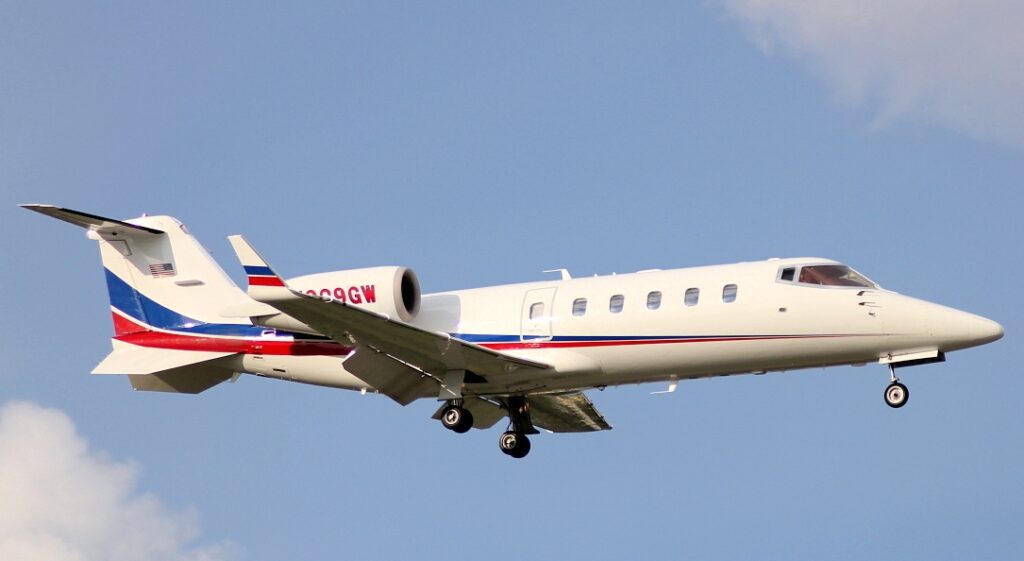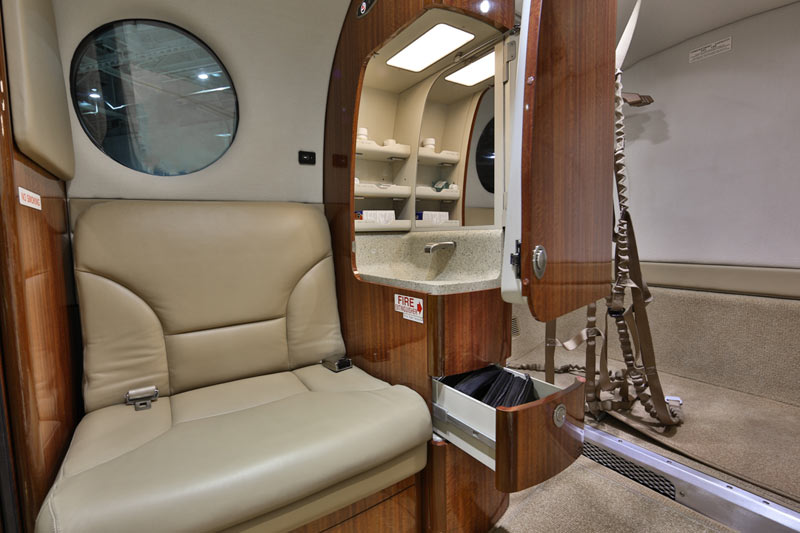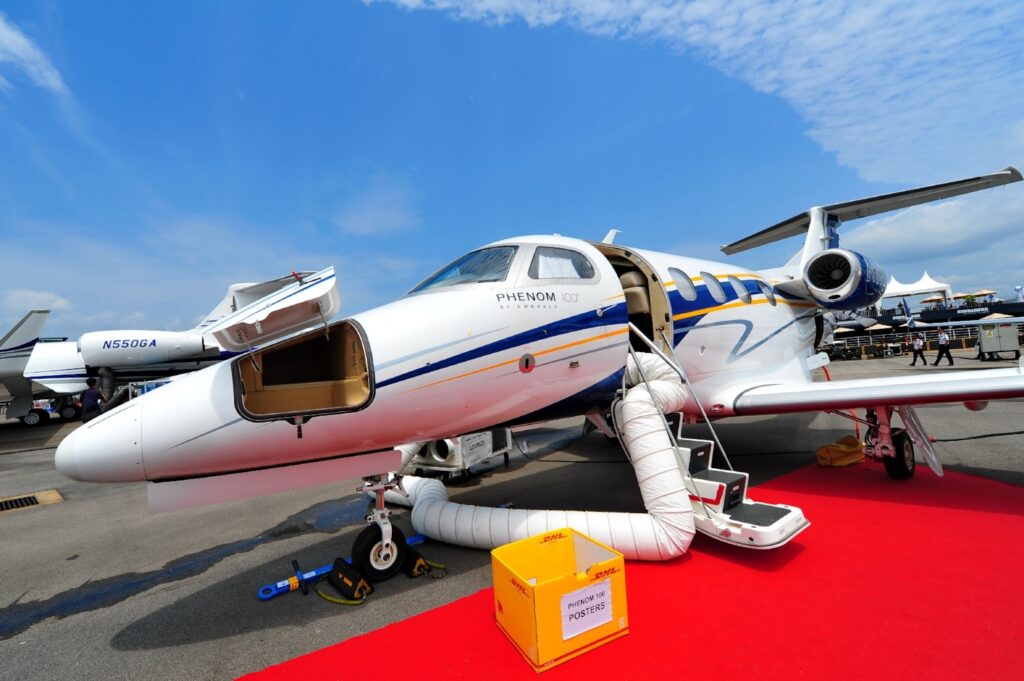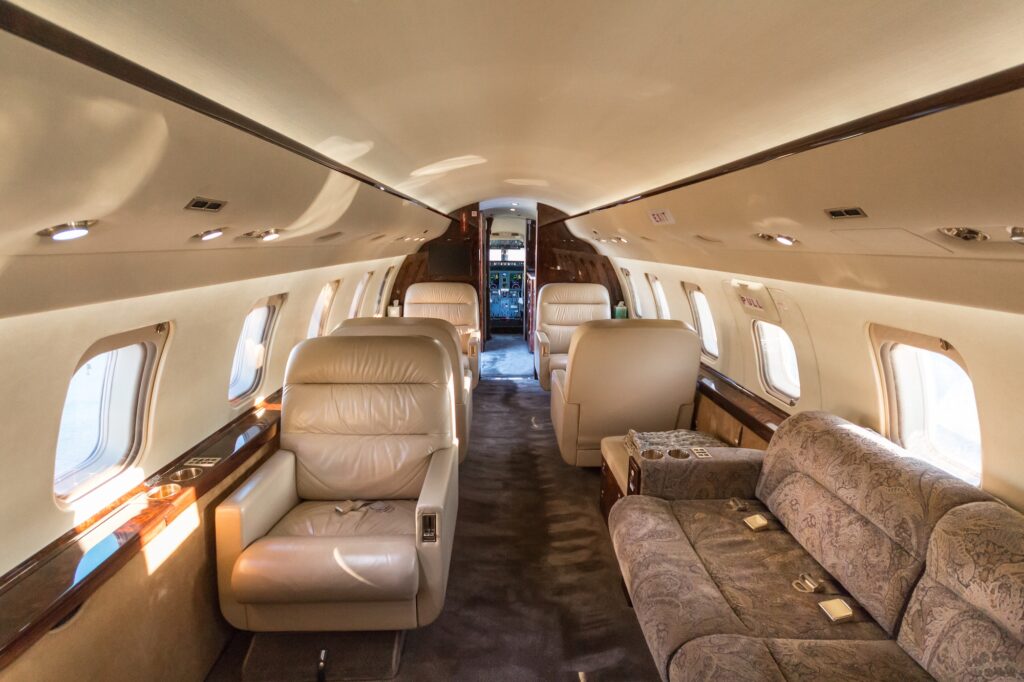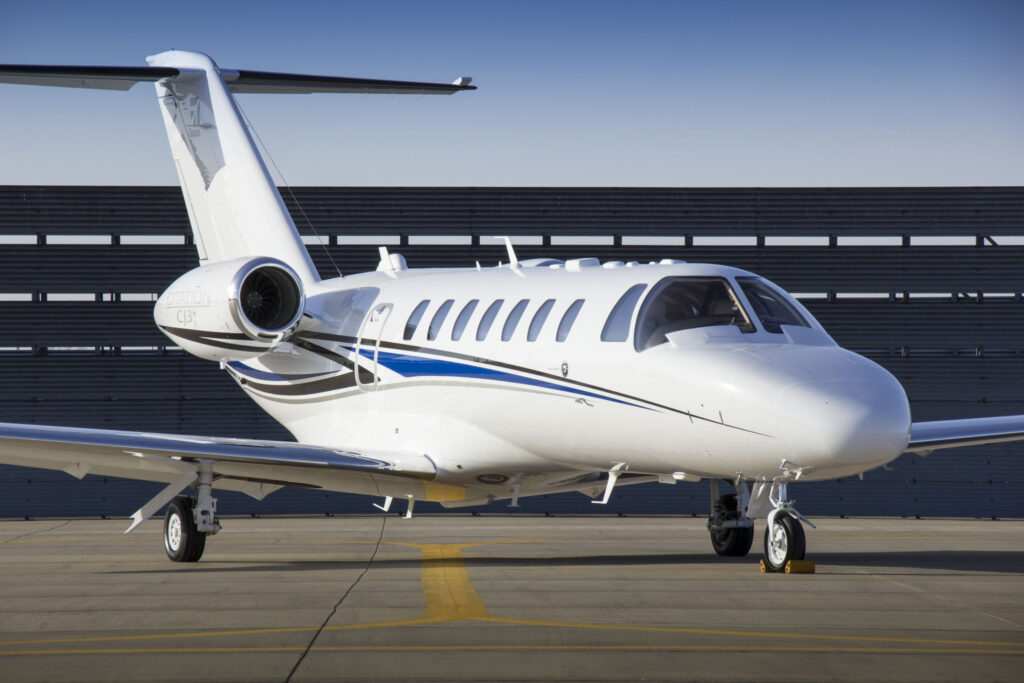Learjet 60
First delivered in 1993, the Learjet 60 was created as an improved version of the Lear 55. Compared to the 55, the Lear 60 comes equipped with a longer fuselage and more powerful engines, improving upon its range, climb rate and cruise speed. The Lear 60 also comes equipped with aerodynamic improvements to the wing and fairing. Bombardier also created the Lear 60SE and 60XR. The SE includes luxury interior and entertainment options, as well as enhanced WX detection and APU. The XR has an upgraded cabin, an improved braking system and the Pro Line 21 avionics system.
The Lear 60 is powered by two Pratt & Whitney Canada PW305A engines. It has a normal cruise speed of 425 knots, a range of 2,418 nautical miles, a climb rate of 4,500 feet per minute, and requires 5,314 feet of runway to takeoff and 3,978 to land.
Learjet 70
The Learjet 70, one of only two Learjet models still in production, was created as a replacement for the Learjet 40 in 2013. The Lear 70 comes equipped with more powerful and more efficient engines, higher fuel capacity, improved winglets and upgraded G5000 avionics with Bombardier’s Vision Flight Deck. Compared to the Lear 40, the 70 has a further range, faster long-range cruise speed and an upgraded cabin.
The Lear 70 is powered by two Honeywell TFE731-40BR engines. It has a normal cruise speed of 425 knots, a range of 2,045 nautical miles, and requires 4,124 feet of runway to takeoff and 3,101 to land.
Learjet 75
The Learjet 75, also introduced to the market in 2013, serves as a replacement for the Learjet 45. The Lear 75 is two feet longer than the Lear 70, giving it room for two more passengers (8 compared to 6). Apart from the stretched fuselage, the 75 operates with nearly identical specifications to the Lear 70. Compared to the 45, the 75 has a further range, more efficient engines, and better runway performance. It also comes equipped with Garmin’s G5000 avionics system and Bombardier’s Vision Flight Deck.
The Lear 75 comes equipped with the same Honeywell TFE731-40BR engines found on the Lear 70. It has a normal cruise speed of 425 knots, a range of 2,026 nautical miles, and requires 4,320 feet of runway to takeoff and 3,136 feet to land.
[ulp id=’ksrvpykbSKmvluGu’]

